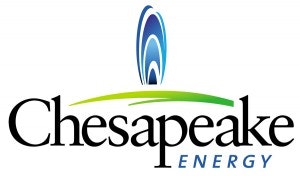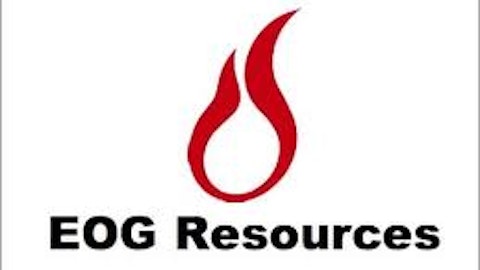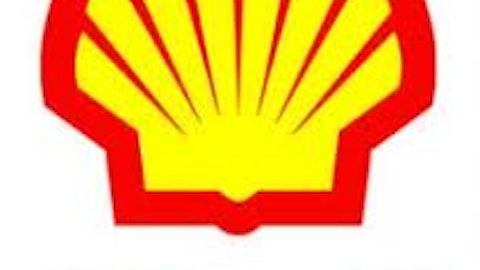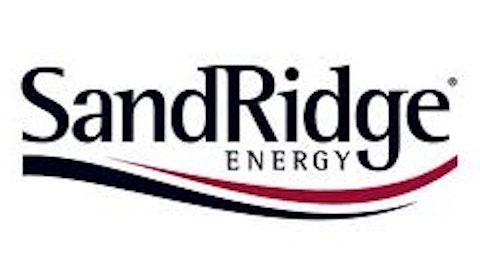In a world starving for income, companies with a paltry yield suddenly become attractive. Sculpting a strong yielding portfolio isn’t as simple as setting up a stock screener and hitting search. The energy sector is especially volatile and inexperienced management teams can offer dividends in a very imprudent manner. Chaotically organized hedging programs only make earnings more volatile. It is very important to look at potential instabilities in a company’s business model before investing.

Henry Hub Natural Gas Spot Price data by YCharts
Don’t Ignore the Risk in Upstream Firms
Upstream companies play the difficult game of taking resources out of the ground. Chesapeake Energy Corporation (NYSE:CHK) has increased its dividend over the past decade to its current rate of $0.0875 per quarter. The company is trying to grow into a mature firm with a responsible capital structure. Even with these aspirations, the firm needs to be taken with a giant grain of salt.

The company has a total debt to equity ratio of 1.01. This debt load would be acceptable if it was a diversified producer with a mix of wells, pipelines and refineries, but it is not. Recently it was forced to sell off many stabilizing assets to avoid bankruptcy.
Chesapeake Energy Corporation (NYSE:CHK) has managed to reorient its production toward more profitable oil-rich regions like Eagle Ford where it managed to produce 65% oil in Q1, 2013. These oil rich wells will help to drive the firm’s estimated earnings per share (EPS) of $1.29 in 2013, but investors need to remember that the firm is a giant upstream player without the natural hedges of the largest integrated oil companies. With such inherent risk in Chesapeake Energy Corporation (NYSE:CHK)’s business model, its dividend should be considered very hesitantly.
Encana Corporation (USA) (NYSE:ECA) is an old and established natural gas producer. It did not suffer the same catastrophe as Chesapeake, but it has had its fair share of negative news. Recently it was forced to write down billions of dollars in assets. It also sold its interest in a proposed liquefied natural gas (LNG) facility in Western Canada. Like Chesapeake, it is focusing in the volatile upstream market.
Encana Corporation (USA) (NYSE:ECA)’s current dividend offers a yield of 4.4%. This higher yield helps to explain why the company trades at a 2013 forward P/E ratio around 24 while Chesapeake trades around 15. Encana’s valuation is significantly higher than Chesapeake’s even though Encana Corporation (USA) (NYSE:ECA) has a higher debt load with a total debt to equity ratio of 1.63.
Like Chesapeake, Encana Corporation (USA) (NYSE:ECA) is trying to diversify itself away from pure natural gas production. Approximately 54% of its 2013 capital expenditures (capex) will go to liquids rich plays and 25% to oil. PetroChina recently agreed to put more than $2 billion Canadian dollars for a 49.9% working interest in the Duvernay play in Alberta. This will decrease Encana Corporation (USA) (NYSE:ECA)’s required investment, but it doesn’t change the company’s high valuation and high debt load.
A Better Looking Balance Sheet
Exxon Mobil Corporation (NYSE:XOM) doesn’t sound as exciting as a high-growth and unconventional upstream firm, but ExxonMobil’s strategic planning capabilities shouldn’t be ignored. The company has almost no debt with a total debt to equity ratio of 0.07. It is involved in the natural gas market and its interests in LNG export facilities give it relatively stable income.
It is working on LNG facilities in Papua New Guinea and Australia’s Gorgon Jansz. The company also has a strategic relationship with Qatar Petroleum. Exxon Mobil Corporation (NYSE:XOM) offers its decades of experience and will profit from the toll-road like nature of LNG exports. At the same time, this partnership helps Exxon Mobil Corporation (NYSE:XOM) to get around America’s hesitation to approve new LNG export facilities.
It is highly unlikely that Exxon Mobil Corporation (NYSE:XOM)’s shares would quadruple in the next five years, but its return on investment of 27.4% offers safe and steady returns. At a 2013 forward P/E ratio around 11, Exxon Mobil Corporation (NYSE:XOM) pays dividend at a reasonable valuation that is supported by profitable and diversified business operations.
Conclusion
Exxon Mobil Corporation (NYSE:XOM)’s yield of 2.8% isn’t sky shattering, but it is a good deal in today’s income constrained environment. In the long run it is better to stick with a safe dividend backed by a well-managed company, than underestimate the risks in higher yielding firms. Encana Corporation (USA) (NYSE:ECA) and Chesapeake Energy Corporation (NYSE:CHK) both carry substantial debt loads. Given the volatility in commodity prices, these firms’ dividends need to be treated carefully.
Joshua Bondy has no position in any stocks mentioned. The Motley Fool has the following options: Long Jan 2014 $20 Calls on Chesapeake Energy, Long Jan 2014 $30 Calls on Chesapeake Energy, and Short Jan 2014 $15 Puts on Chesapeake Energy.


